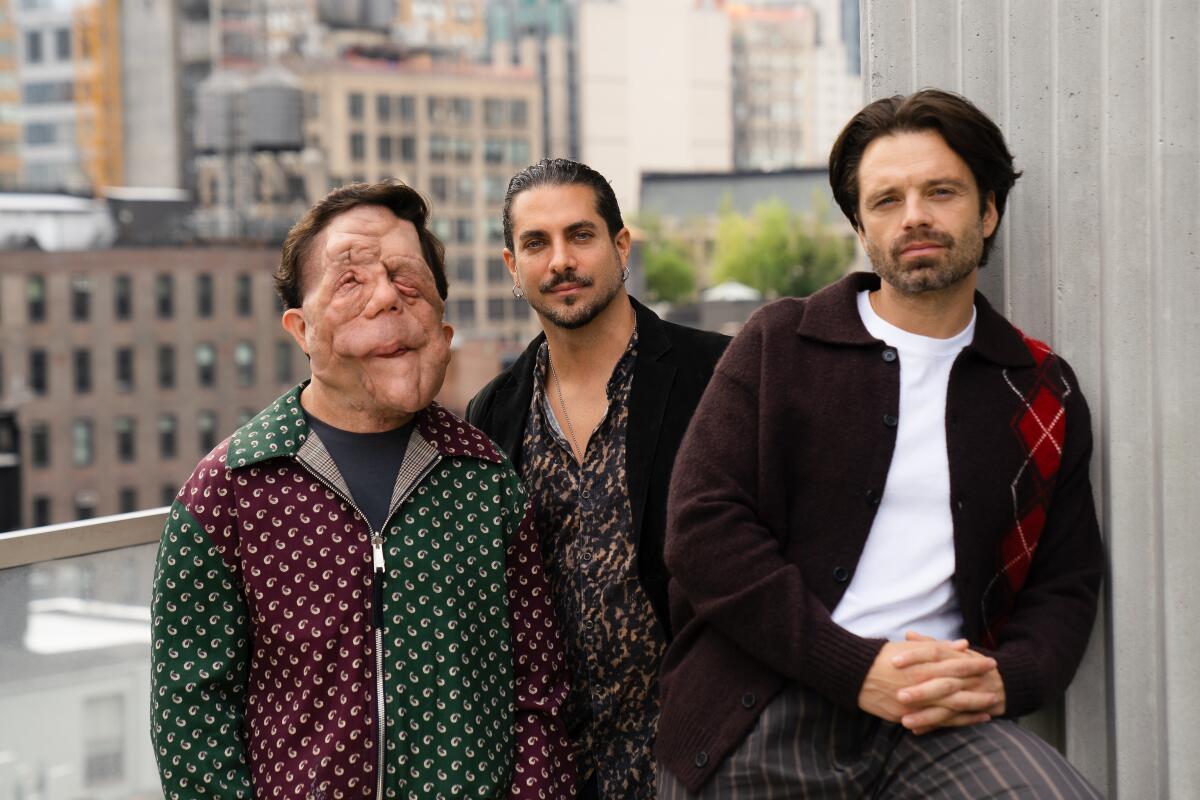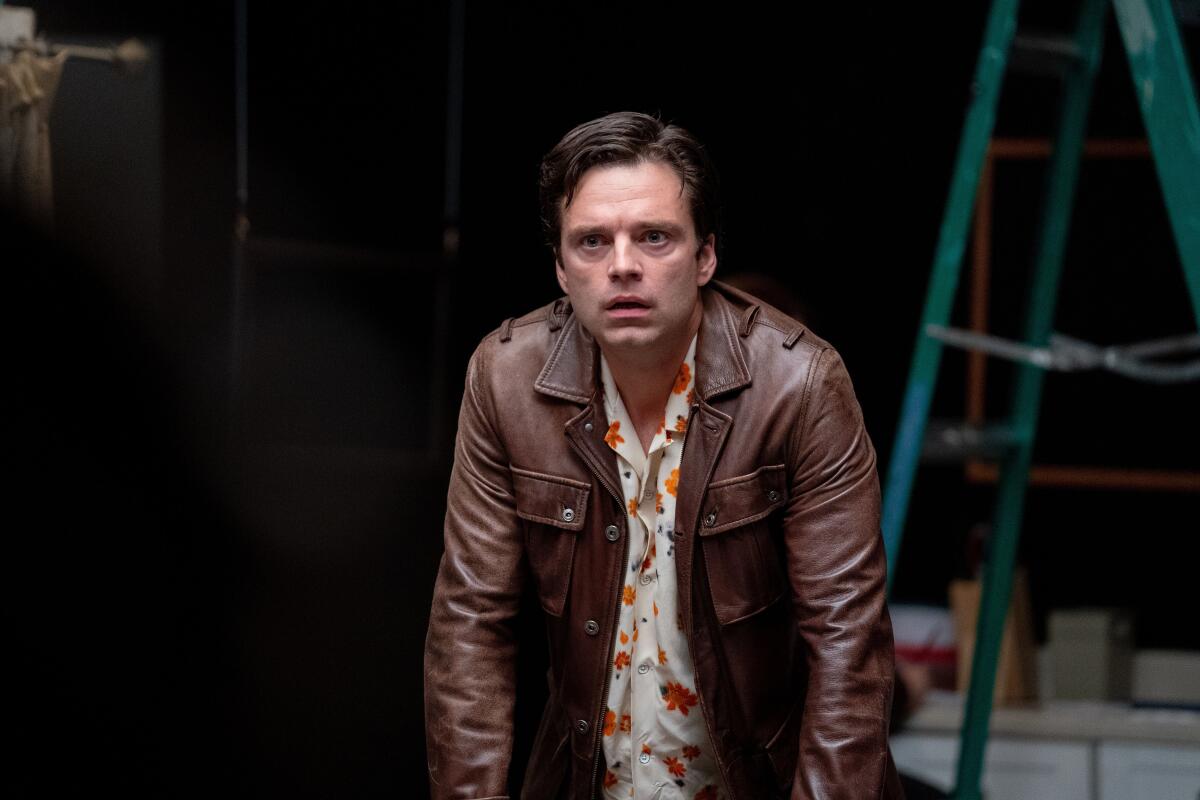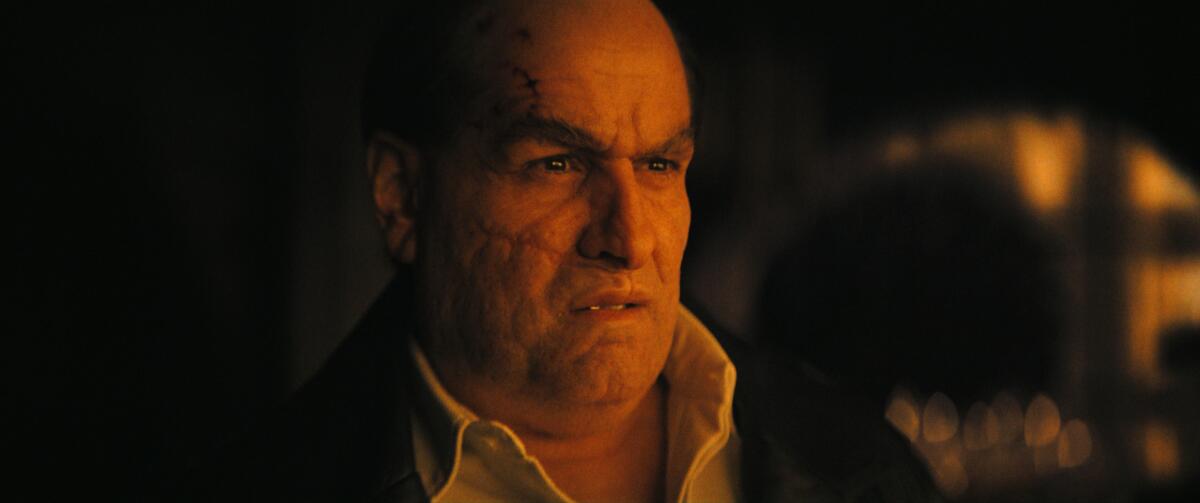Mike Marino saw The Elephant Man for the first time at the age of 5, and his life was forever changed. When David Lynch’s haunting and heartbreaking tale of John Merrick aired on HBO in the early 1980s, Marino was horrified but couldn’t look away, sparking a passion for prosthetics that would eventually make him one of the world’s top Hollywood makeup artists.
Marino, 47, who is nominated for consecutive Oscars in 2022 and 2023, says: “I was very intimidated by it, but I didn’t know how beautiful the story was and how it would be in my brain and how much it would leave a mark on my soul.” The makeup work on the films “Coming 2 America” and “The Batman,” the latter of which completely changed Colin Farrell’s role. “If it wasn’t for that movie, I wouldn’t be doing what I’m doing.”
But for actor, TV host and disability rights advocate Adam Pearson, Lynch’s film took on a more poignant role in his life. Growing up in England with neurofibromatosis type 1, a rare genetic disorder that causes tumors to grow on his face, Pearson was often teased by his classmates, who cruelly called him “The Elephant Man” and other names. As he grew up, he saw how movies routinely portrayed people as monsters, villains or victims, stripping them of their humanity. “There’s an element of laziness to it,” says Pearson, 39. “How do we show that this character is bad? Let’s give them a chance.”
Now, by a twist of fate, Marino and Pearson’s lives intersect on a very different project: the darkly funny, mind-bending psychological thriller The Other Man. Directed by Aaron Shimberg, the A24 film stars Sebastian Stan as Edward, a shy, awkward actor working in New York City who auditions to change his appearance, only to lose a role he was born to play; a pleasant, outgoing man named Oswald with the same facial deformity as Pearson. Renate Reinve (“The Worst Man in the World”) stars as a playwright whose latest work deals with Edward’s identity crisis.
Renate Reinwe and Sebastian Stan in The Other Man.
(Matt Infante/A24)
The Other Man, which The Times called a “self-made meta-pretzel of black comedy” after its premiere at this year’s Sundance Film Festival, tackles complex themes of identity, beauty and disability with Charlie Kaufman’s fusion of surrealism and David Cronenberg’s body horror. Along with Stan’s performance, Marino’s carefully crafted prosthetics are key to bringing Edward and his inner pain to life, reflecting the deep emotional pain of a man trying to escape his own skin.
“The film portrays how the surface of who we are should not dictate our spirit and personality,” Marino says. “I think it’s a very important film, like The Elephant Man.”
When Shimberg first wrote the script, inspired by her own struggles with cleft palate and her experience working with Pearson on his 2019 comedy Chains for Life, she initially didn’t know how she would handle the demanding prosthetics work for the film. “I was kind of ignorant,” Shimberg says. “After Sebastian came on board, we quickly started putting the movie together. It wasn’t until about a month into shooting that I realized that if we didn’t get it right, this movie would be completely ruined. It was very much down to the wire.”
Upon signing on as executive producer of the film, Stan asked around about makeup artists in the New York area who could do such a difficult job under such time pressure. One answer kept coming: “Almost everyone, with their hands down, was like, ‘You’ve got to get Marino,’” the actor recalls.

Pearson, left, Marino and Stan, pose for a photograph at the A24 offices in New York in September.
(Sean Daugherty/for The Times)
Though he was already busy working on The Incredible Miss Maisel, Marino, who has done his share of fictional creations, took on the challenge of recreating a real-life twist on Pearson’s life. “I’m fascinated by people who have something on their skin, because it’s the most interesting, artistic and natural thing,” Marino says. “To me, there’s a strange beauty in Adam’s appearance. It wasn’t about a scary face or a scary person. I don’t like doing those things without spirit or purpose.”
Marino’s passion for makeup and prosthetics sparked at an early age, inspired by industry legends like Dick Smith (“The Exorcist”) and Rick Baker (“An American Werewolf in London”). Growing up in New York City, Marino began his skills as a teenager practicing on his friends with latex, foam and various chemicals, ruining his bedroom carpet in the process, much to the dismay of his parents. While still in high school, he sent his portfolio to Smith and received a phone call from the makeup legend, who won an Oscar in 1985 for Amadeus and an Academy Award in 2012. “He recognized me, he’s like okay, he’s serious. Nothing could stop me.”

After undergoing an experimental treatment to change his face, Edward Sebastian Stan adopts an alter ego named Guy.
(A24)
After getting his start on “Saturday Night Live” and “Buffy the Vampire Slayer,” Marino broke into movies with the 2007 psychological thriller “Anamorph” and quickly became known for his versatility, seamlessly transitioning between fantasy creatures and subtle real-life past programming. His work on Darren Aronofsky’s Black Swan enhanced the film’s psychological horror, while on Martin Scorsese’s The Irishman he enhanced the digital de-aging of Robert De Niro and Al Pacino with the film’s meticulously crafted prosthetics.
Outside of the film, Marino created the Weeknd’s plastic surgery look for the singer’s “Save Your Tears” video. “You have to work through all these issues,” Marino says. “There’s no playbook.”
Marino dove into “The Other Man,” using photographs and 3-D scans of Pearson’s face — which had undergone nearly 40 surgeries over the years — as the basis for a multi-piece silicone prosthesis that worked with Stan’s features. “There was no way I could exactly replicate Adam’s exact proportions,” he says. “I had to make some aesthetic decisions.”
While The Elephant Man’s makeup benefited from that film’s black-and-white cinematography, The Other Man’s prosthetics had to endure more relentless tests. To test his Edwardian visage, Stan walked from Marino’s accent chair to the set through New York streets and crowds of strangers, giving him great insight into how people interact with people of different appearances.
“I went to my old coffee shop and the same waiter who had served me for years couldn’t identify me,” Stan recalls. “I was able to experience people’s reactions in real time. Some people couldn’t even look at me, others would, and sometimes you get more reactions like, ‘Oh, it’s the Elephant Man! ’ As Adam says, you feel like public property.”
Pearson, who shares his character’s light-hearted nature, encouraged Stan to think about that, as well as his experience as a movie star. “I said, ‘You don’t know the level of aggression I get when people point and stare and take pictures, but you’re going to get something very similar from this point of view, so just do it,’” he said. “‘And if it makes you uncomfortable, lean into it more.’”
While wearing a prosthetic limb, Stan could only see out of one eye and had limited hearing in one ear, issues that further influenced his work as a man who learned to avoid potential threats and insults. “Edward is a character who has had to endure a lot of emotional abuse and possibly physical abuse, so he’s probably always a little bit on the wrong foot in case something happens,” Stan says.
As Edward’s face changes after his radical treatment, Marino made additional prosthetics to mark the transition, including an “extremely soft, squishy version” that Stan could take apart in one particularly Cronenbergian scene.

Colin Farrell stars as Oswald Cobblepot in Marino’s Oscar-nominated Batman.
(Images from Warner Bros.)
Marino’s talent for transforming stars will be on display in Farrell’s outrageous turn as the Penguin in 2022’s “Batman” and the new HBO series. “When Colin saw the sculpture I made, the ideas exploded,” Marino says. “When we did the makeup test, it was magical: He could talk, he could walk, and he was already a child.”
Marino, who is preparing to direct from a script he wrote in the 1980s (“It’s deliberately not very effects-heavy,” he notes), has since lost none of his passion for the transformative power of latex and silicone. He harks back to the days when as a teenager he obsessed over issues of Cinefex magazine. “If you think Michelangelo showed beauty in painting and sculpture 500 years ago, I’m still showing the same beauty now, but in this new hyper-realistic way, in silicone,” says Marino, who named his makeup effects studio after him. A prosthetic renaissance“This is a very unique art. It’s like moving statues and paintings at the same time.”
As for Pearson, if he were offered an experimental treatment to change his face, like in the film The Other Man, he says he wouldn’t take it. Despite the trouble it caused him, Pearson believes his face has shaped his life today.
“I joke with my friends that my disability adds a lot of weight to my scary personality,” he says, laughing. “Everyone thinks it’s hard to go from non-disabled to disabled, but I think the other way around will be even harder. The journey we take and the struggles we go through make us who we are and they are inseparable.”
